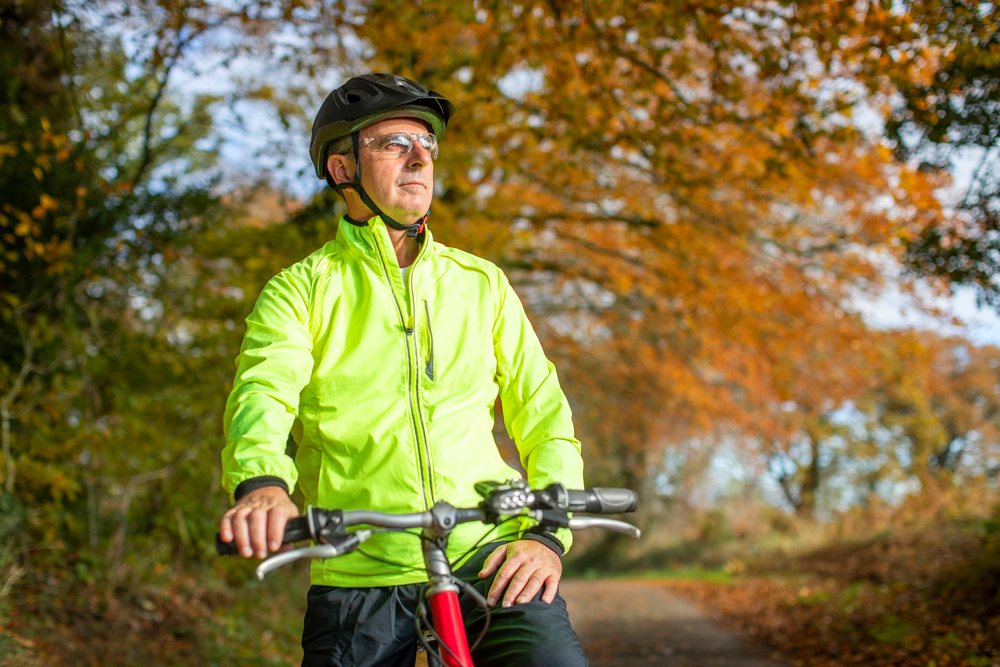
Navigating busy streets on two wheels can be a daunting experience, especially for novice cyclists. Riding in traffic requires skill and confidence; legally, bicycles have all the same rights and responsibilities as automobiles. To ensure your safety and make your ride more enjoyable, we’ve compiled a list of top tips for safely riding your bike in traffic to help you become a wiser, safer cyclist.
Be Visible
- Wear Bright Clothing: Reflective clothing can significantly increase your visibility to drivers, especially during dusk and dawn.
- Use Lights: Even during the day, flashing lights can help make you more noticeable. Ensure you have a white light at the front and a red light at the rear. At night, these are not just helpful but are usually legally required.
- Reflectors: Adding reflectors on your bike – to the wheels, pedals, and frame – can also boost visibility.
Ride Predictably
- Signal Your Intentions: Always use hand signals to indicate turns and stops so drivers, pedestrians, and other cyclists know what you plan to do.
- Avoid Weaving: Ride in a straight line and don’t weave between parked cars.
- Ride in Control: Ride at a safe speed that permits you to react quickly to unexpected circumstances.
Stay Alert
- Anticipate Actions: Pay attention to the cars around you. If a car’s indicator is on or there’s an opening in traffic, anticipate a turn.
- Beware of Door Zones: Watch out for doors that might suddenly open when riding near parked cars.
- Be Ready to Brake: Keep your hands on or near the brake levers so you can stop quickly.
- Know Your Surroundings and Expect Changes: If five or more cars are behind you, pull over and let them pass.
- Intersections: Pedal quickly through intersections and be especially cautious when cycling through. Many cycling accidents occur here.
Position Yourself
- Take the Lane When Necessary: If a lane is too narrow for a car and a bike to share safely side by side, take the center of the lane. This prevents drivers from trying to squeeze past you in a space that’s too tight.
- Stay Out of Blind Spots: Semi-trucks have a blind spot when they turn; avoid riding in the blind spot. At traffic lights or stop signs, ensure you’re either in front of or behind a car, not beside it where the driver can’t see you.
- Maintain a Safe Distance: What qualifies as safe? Enough space to allow you to react to something unexpected. Aim for 1 bike length (or more) per every 5 miles per hour you’re traveling. Keep at least 4 feet between you and a vehicle.
- Curbs: Don’t hug the curb too closely. Maintain a comfortable distance from the pavement edge.
- Slow-Moving Traffic: In heavy, slow-moving traffic, it’s often safer to ride in the middle of a traffic lane so that everyone can see you and cars won’t try to squeeze around you.
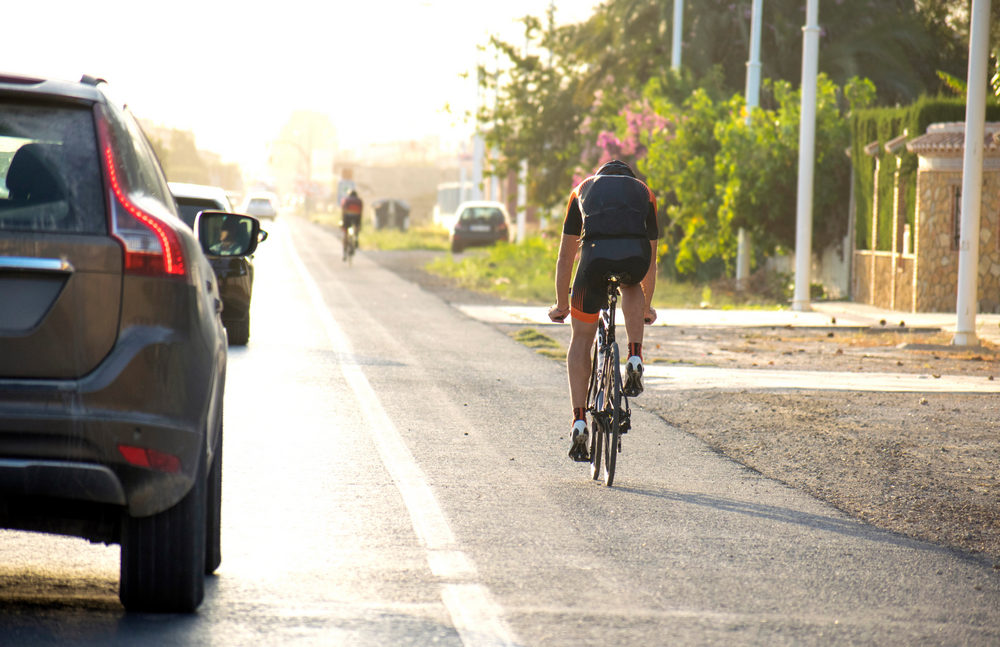
Equip Your Bike
- Install Mirrors: Having a mirror can help you monitor traffic behind you without constantly having to look over your shoulder.
- Use a Bell or Horn: This can be useful to alert pedestrians or other cyclists of your presence.
Follow the Rules
- Obey Traffic Signals: Stop at stop signs and red lights. Respect pedestrian crosswalks.
- Ride with Traffic: Always ride in the same direction as traffic. Riding against traffic is dangerous and often illegal.
- Ride Single File: This is required by law in most states. Some states allow cyclists to ride in pairs. Do this only on less-traveled roads that are free of traffic.
- Don’t Ride on Sidewalks: Motorists at intersections or when leaving or entering driveways often do not see swift-moving cyclists traveling on sidewalks.
- Don’t Pass Other Cyclists on the Right
Stay Calm
- Avoid Confrontation: If a driver behaves aggressively, it’s best not to engage. Your safety should be your top priority.
- Ride with Confidence: Timid, wobbly riders make drivers nervous. Cyclists or groups of cyclists who ride respectfully and self-assuredly are more likely to be granted extra room and respect in return.
- Breathe and Focus: City cycling can be intense. Regularly take deep breaths, keep your focus, and remember that your confidence and skills will improve with each ride.
- Choose Quieter Streets: Even if it’s a longer route, quieter streets often make for a safer and more pleasant ride.
- Practice: If you’re new to urban cycling, practice during quieter times, like early mornings or weekends, to get a feel for it.
Highway Riding
Cycling on high-speed roads requires extra caution. Avoid it if you can, but if you must, follow these rules:
- Stay as far right as possible, using the shoulder whenever possible.
- Check behind yourself frequently and listen for approaching cars.
- Brace yourself for passing vehicles (especially large trucks or other wide vehicles) by gripping your handlebars firmly, lowering your body to lessen wind resistance, and moving as far to the right as possible.
- Keep in mind that the wind from passing vehicles tends to “pull” cyclists forward and toward the passing vehicle.
Cycling in traffic can be challenging, but it can become a safe and enjoyable daily routine with the right precautions and awareness. Always prioritize your safety, equip your bike correctly, and remember that every ride makes you a more seasoned urban cyclist. Should you experience a cycling incident, contact Bonnici Law Group. Our team aims to protect your rights, negotiate with insurance companies, handle complex legal procedures, and ensure fair compensation.
Stay updated with cycling news, tips, and tricks monthly by reading our monthly blog releases here. For expert and legal advice, contact Bonnici Law Group today for a free consultation by calling (619) 870-0181 or clicking here.
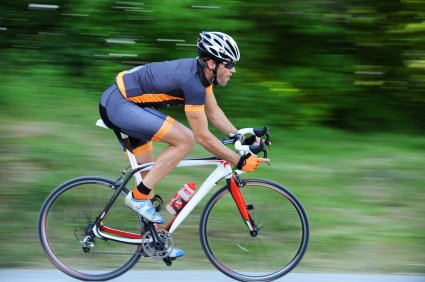 Fred has thousands of miles of cycling under his belt.
Fred has thousands of miles of cycling under his belt.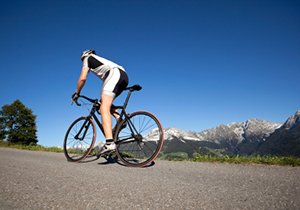

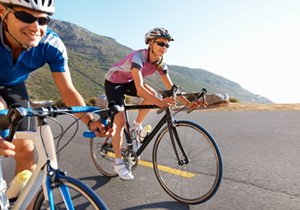
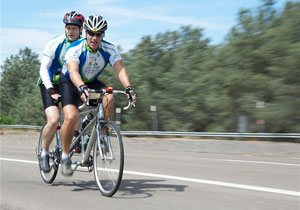
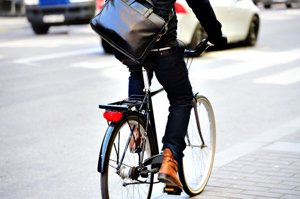
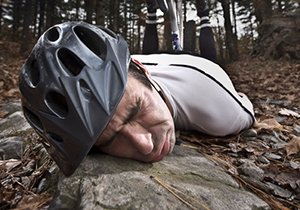
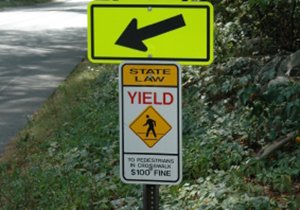

 1620 5th Avenue
1620 5th Avenue 1620 5th Avenue,
1620 5th Avenue,